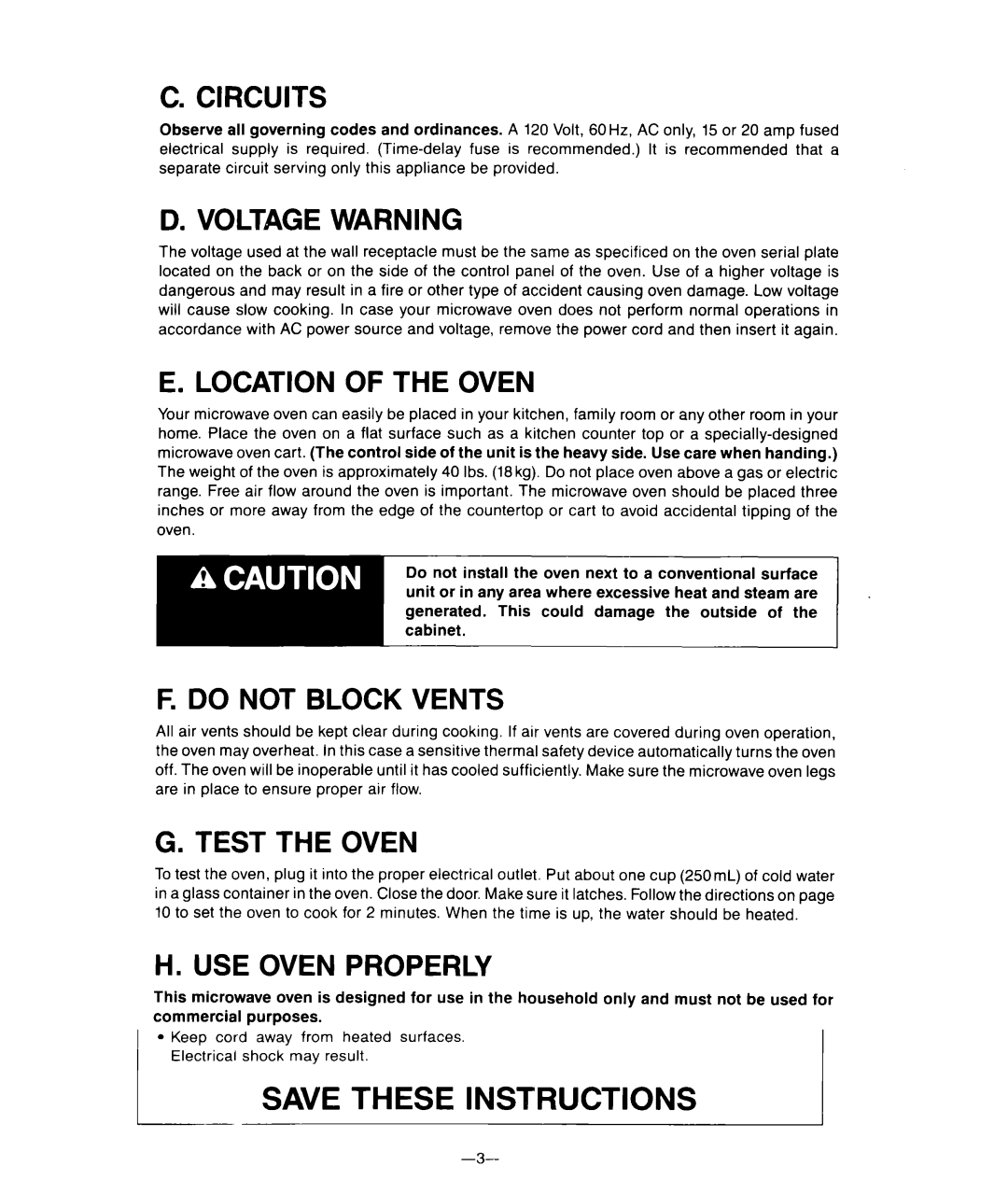
C. CIRCUITS
Observe all governing codes and ordinances. A 120 Volt, 60 Hz, AC only, 15 or 20 amp fused electrical supply is required.
D. VOLTAGE WARNING
The voltage used at the wall receptacle must be the same as specificed on the oven serial plate located on the back or on the side of the control panel of the oven. Use of a higher voltage is dangerous and may result in a fire or other type of accident causing oven damage. Low voltage will cause slow cooking. In case your microwave oven does not perform normal operations in accordance with AC power source and voltage, remove the power cord and then insert it again.
E. LOCATION OF THE OVEN
Your microwave oven can easily be placed in your kitchen, family room or any other room in your home. Place the oven on a flat surface such as a kitchen counter top or a
F. DO NOT BLOCK VENTS
All air vents should be kept clear during cooking. If air vents are covered during oven operation, the oven may overheat. In this case a sensitive thermal safety device automatically turns the oven off. The oven will be inoperable until it has cooled sufficiently. Make sure the microwave oven legs are in place to ensure proper air flow.
G. TEST THE OVEN
To test the oven, plug it into the proper electrical outlet. Put about one cup (250mL) of cold water in a glass container in the oven. Close the door. Make sure it latches. Follow the directions on page 10 to set the oven to cook for 2 minutes. When the time is up, the water should be heated.
H. USE OVEN PROPERLY
This microwave oven is designed for use in the household only and must not be used for commercial purposes.
Do not remove the door, control panel or cabinet at any time. The unit is equipped with high voltage and should not be serviced unless by an authorized service technician.
For most accurate programming of the electronic units, touch the center of each pad securely. Do not touch several pads at one time or touch in between pads. A tone should be heard with each touch when pad is touched correctly.
